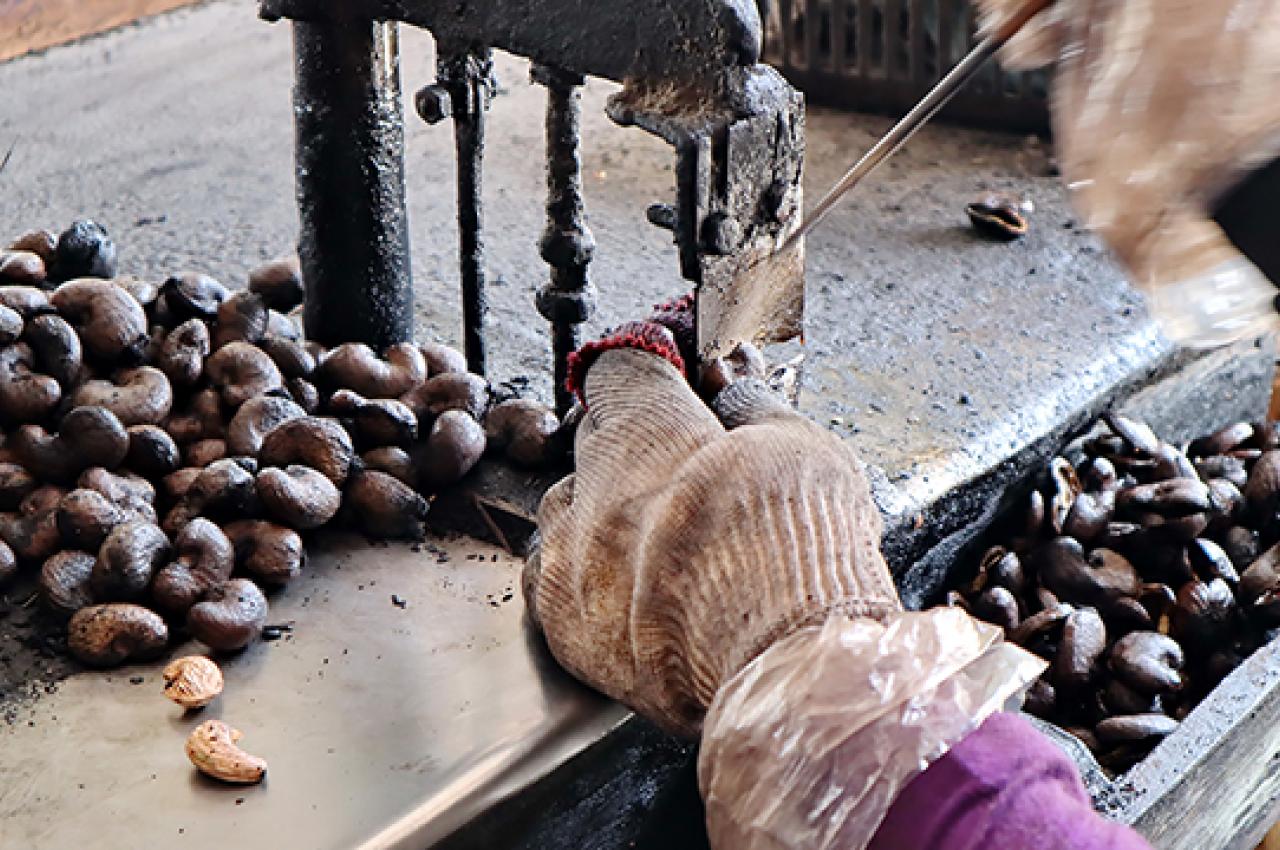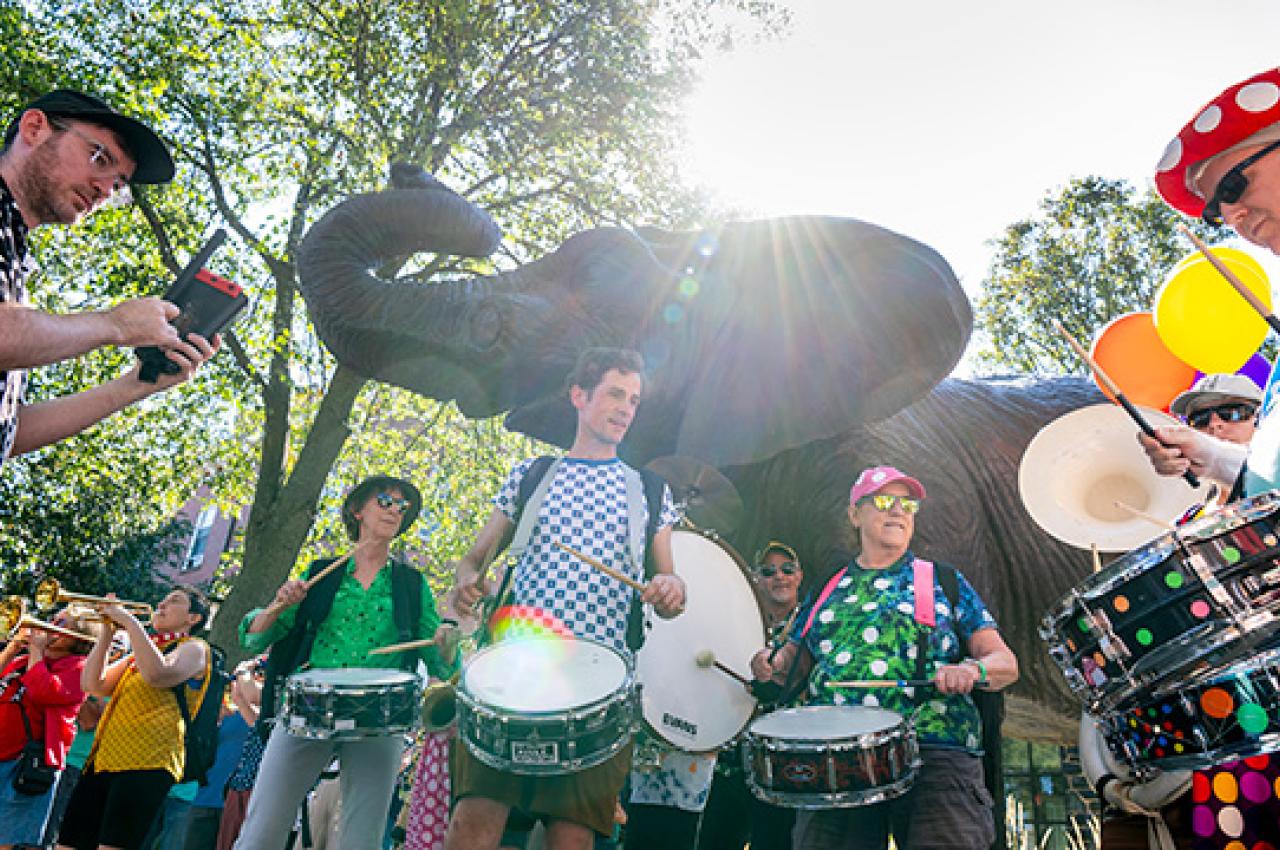Samantha Jonas’ Legacies of Resistance
When Samantha Jonas, A26, was growing up, her grandfather, an enrolled member of the Mashpee Wampanoag Tribe, would regularly make the long drive to Cape Cod for tribal council meetings. That connection to the tribe, which she is a member of, too, drove her work as a Summer Scholar this year, researching tribal land rights issues.
Her research will feed into her senior honors thesis about the land claims of the Mashpee Wampanoag Tribe and the Wampanoag Tribe of Gay Head (Aquinnah). “I investigated what each tribe did starting in 1976 to reclaim their ancestral lands, where they were successful, where they weren’t,” says Jonas, who recently received a Udall Undergraduate Scholarship, given for study in fields related to the environment and to American Indians and Alaska Natives.
“For my senior honors thesis, I’m going to be using the afterlives of those land claims to talk about how they led to the historical moment we’re in now, and how they shaped the forms of contemporary Wampanoag resistance we see today,” she says.
Jonas is majoring in Studies in Race, Colonialism, and Diaspora, and hopes to go on to get a Ph.D. and teach. Co-chair of the Indigenous Students Organization at Tufts, she is also co-teaching an Experimental College class this semester, Contemporary Indigenous Art: Power, Politics, and Sovereignty, along with Vanessa John, A26.
How did you decide to do this project?
This research is personal to me. When I was a kid, my grandpa was very involved with our tribe. I couldn’t really comprehend all of the work he was doing at the time to better tribal affairs and to ensure my cousins and I had a Wampanoag community to call home. He has since passed away, but I investigated his personal archives for a project I did in my senior year of high school, where I learned about his advocacy and his tribal legacy.
I am interested in questions of Dawnland—tribes of the Northeast—resistance, because I think it is often overlooked in Red Power discourse, despite the fact that these tribes have actively resisted the ongoing project of settler colonialism both historically and today.
I think that this research being personal makes me more driven to complete it with care, to pay attention to details, to honor the legacies of our ancestors—and to contribute something meaningful for future generations.
How did the tribes go about trying to recover lands that had been out of their ownership for hundreds of years?
They cited a federal statute called the Nonintercourse Act of 1790, which prohibited the sale or the lease of any Indian tribal lands without Congressional consent. They used that as the basis of their cases, because their land was sold without their consent and without Congressional consent. A lot of tribes in the Northeast used that statute in court to try and get land back.
The Aquinnah tribe on Noepe—Martha’s Vineyard—was successful because they were able to pursue negotiations, rather than just going straight to court. The town of Aquinnah, which was called Gay Head until 1997, had a much smaller town budget, and litigation with the tribe was unattractive to them. The tribe received federal recognition much earlier, partly because of their successful negotiations.
The Mashpee Wampanoag Tribe land reclamation effort in 1976 was unsuccessful as they filed suit against several large land development corporations that were constructing homes and encroaching on tribal lands. These corporations, backed with substantial resources, secured strong legal representation and the support of local townspeople.
The federal statute that the tribe cited required them to prove their existence as a tribe in court, so their case became a deeply fraught question of identity—what constitutes a tribe, what doesn’t?
The Mashpee town selectmen, who represented the defendants of the case, exhibited strong anti-Indigenous sentiment, leaning on racist stereotypes about what a real Indian should look and act like. The tribe was unsuccessful and didn’t receive federal recognition as a tribe until the early 2000s.
How did you go about the research?
My advisor, Professor Mary Amanda McNeil, who’s Mashpee Wampanoag like myself, advised me throughout my summer research. I looked through a lot of newspaper articles, and read through a lot of legal documentation. A television source that I used, a program called Say Brother on WGBH, had given the tribes a platform to speak about the cases. That was especially helpful, because one featured the tribal chairman at the time, so I got to hear what he was saying about it directly.
I read books like Mashpee Nine: A Story of Cultural Justice by Paula Peters and The Mashpee Indians: Tribe on Trial by Jack Campisi, and publications of tribal statements at the time regarding the cases. They both emphasized that their goal wasn’t to evict anyone from their homes, but simply to reclaim legal title to the land. The return of land to tribes ultimately benefits not only Indigenous communities, but also homeowners, non-Native residents, and the land itself.
What’s your plan for research this school year?
This fall I’m going to begin working on my oral histories—Professor McNeil has been incredibly helpful in connecting me with individuals at the forefront of contemporary Wampanoag resistance efforts. These include those working in land conservancy, Native youth leading environmental initiatives, tribal historians reclaiming and sharing our stories, and language keepers revitalizing the Wampanoag language. My goal is to connect their work today with the struggles and movements that came before.













